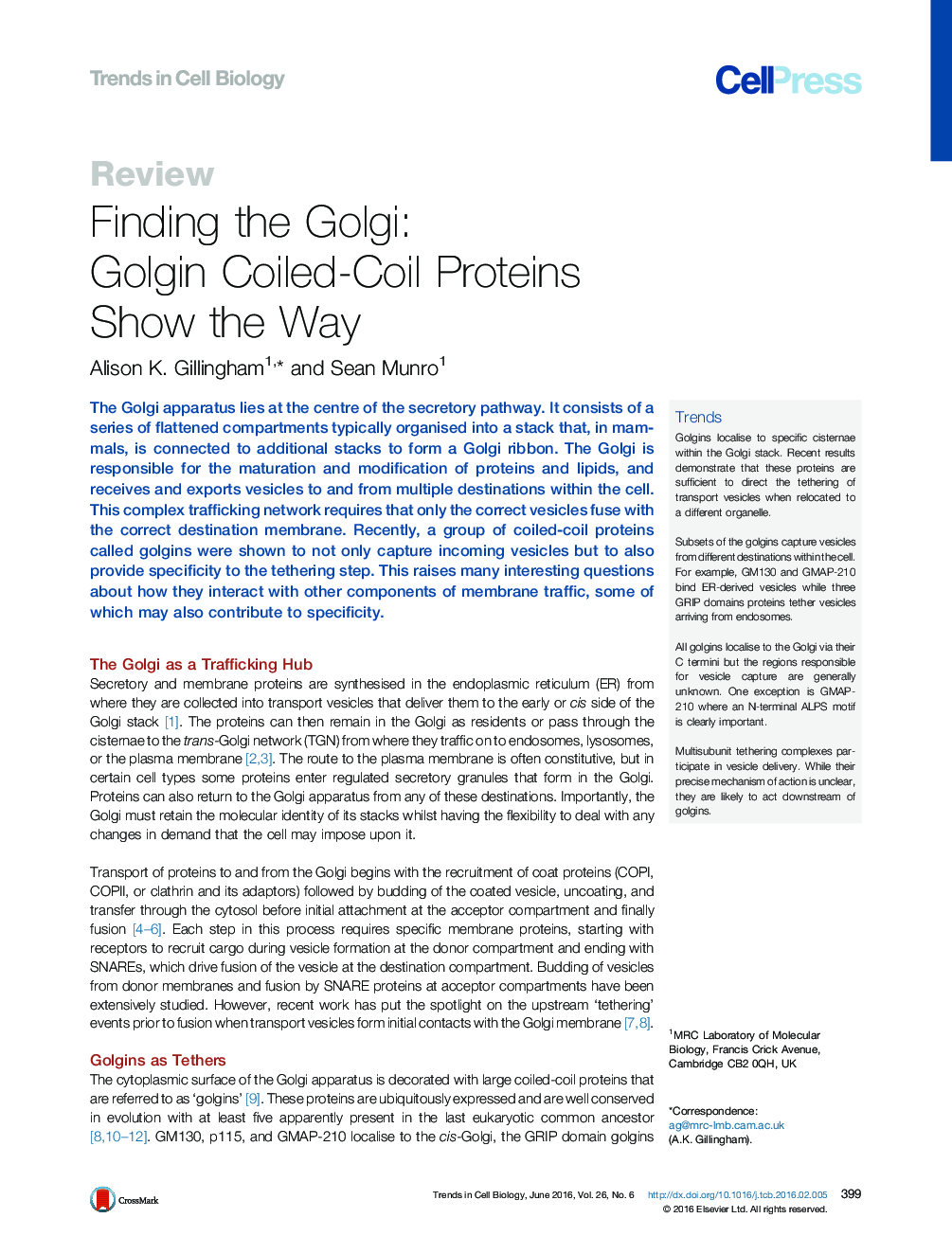| Article ID | Journal | Published Year | Pages | File Type |
|---|---|---|---|---|
| 2204290 | Trends in Cell Biology | 2016 | 10 Pages |
The Golgi apparatus lies at the centre of the secretory pathway. It consists of a series of flattened compartments typically organised into a stack that, in mammals, is connected to additional stacks to form a Golgi ribbon. The Golgi is responsible for the maturation and modification of proteins and lipids, and receives and exports vesicles to and from multiple destinations within the cell. This complex trafficking network requires that only the correct vesicles fuse with the correct destination membrane. Recently, a group of coiled-coil proteins called golgins were shown to not only capture incoming vesicles but to also provide specificity to the tethering step. This raises many interesting questions about how they interact with other components of membrane traffic, some of which may also contribute to specificity.
TrendsGolgins localise to specific cisternae within the Golgi stack. Recent results demonstrate that these proteins are sufficient to direct the tethering of transport vesicles when relocated to a different organelle.Subsets of the golgins capture vesicles from different destinations within the cell. For example, GM130 and GMAP-210 bind ER-derived vesicles while three GRIP domains proteins tether vesicles arriving from endosomes.All golgins localise to the Golgi via their C termini but the regions responsible for vesicle capture are generally unknown. One exception is GMAP-210 where an N-terminal ALPS motif is clearly important.Multisubunit tethering complexes participate in vesicle delivery. While their precise mechanism of action is unclear, they are likely to act downstream of golgins.
